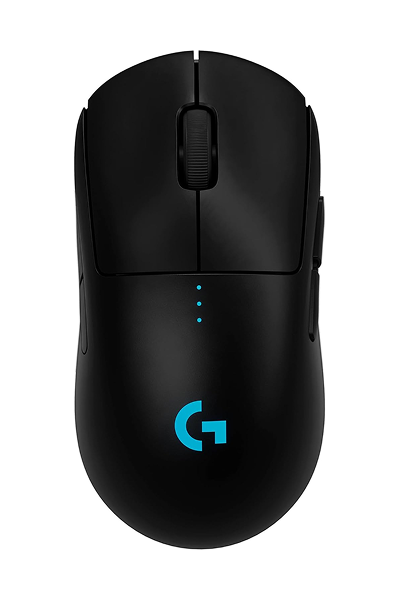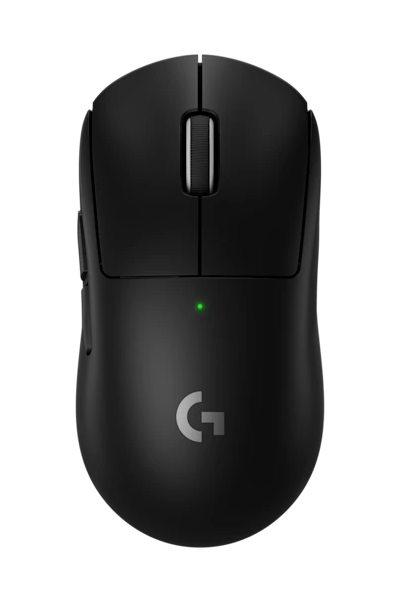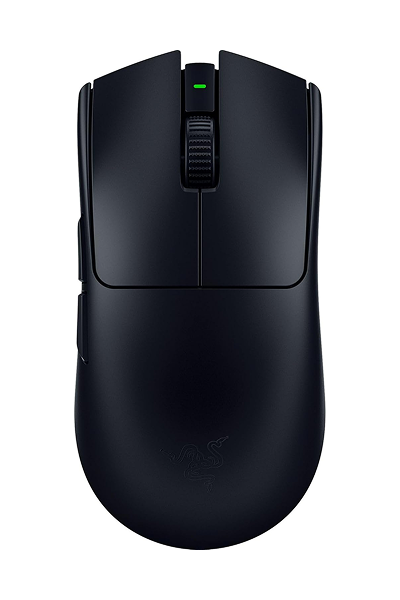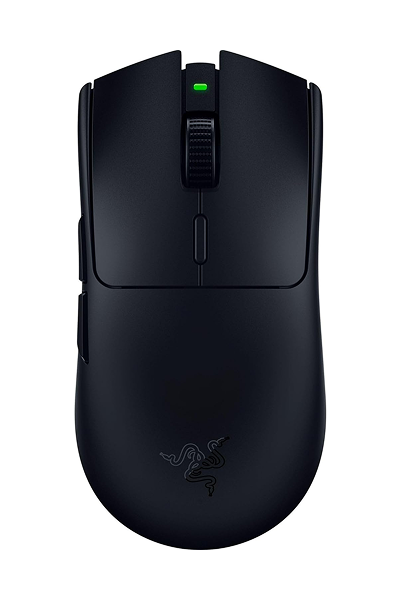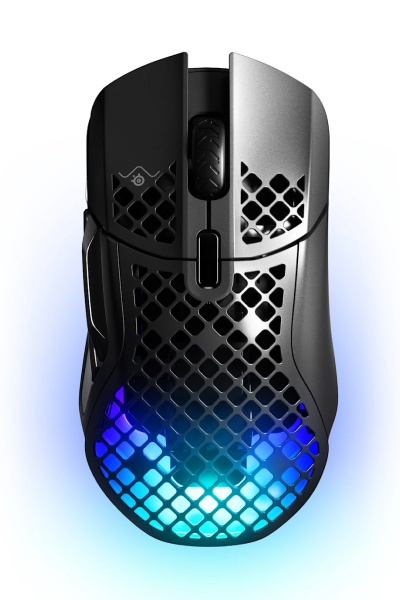Best Ambidextrous Gaming Mice for 2025
Ambidextrous gaming mice combine precision engineering with ergonomic flexibility, letting both left- and right-handed players compete without compromise. These models often feature cutting-edge sensors and ultra-low-latency wireless performance. In this 2025 roundup, we cover top performers like Logitech's G PRO Wireless and Razer's Viper V3 family, as well as the SteelSeries Aerox 5 Wireless, detailing their strengths to help you choose the right one.
Logitech G PRO Wireless
A championship-grade lightweight wireless mouse featuring Logitech's HERO 25K sensor (100-25,600 DPI). It boasts LIGHTSPEED wireless tech for 1 ms response and removable side buttons for true ambidextrous use. The 80g design and solid build quality make it a top choice for competitive gamers.
Specifications
- Sensor Logitech HERO 25K optical sensor
- Weight 80g
- DPI 100-25,600
- Connectivity Wireless (LIGHTSPEED)
- Shape Ambidextrous
- Polling Rate 1000Hz
Pros
- True ambidextrous design with removable side buttons for customization
- High-performance HERO 25K sensor ensures precise tracking up to 25,600 DPI
- LIGHTSPEED wireless connection with low latency and up to 1000Hz report rate
- Lightweight and comfortable (80g), with excellent build quality and long battery life
Cons
- Premium price point compared to other gaming mice
- No Bluetooth support (only uses LIGHTSPEED dongle)
- Underside DPI button can be inconvenient for in-game adjustments
Logitech G PRO X SUPERLIGHT 2
The G PRO X SUPERLIGHT 2 is an ultralight wireless gaming mouse built for competitive play. Weighing only 60 g, it features Logitech's advanced HERO 2 optical sensor (100-44,000 DPI) and up to an 8 kHz polling rate for maximum precision and responsiveness. With Lightspeed wireless connectivity and a symmetrical, ambidextrous design, it offers pro-grade performance in a minimal form factor.
Specifications
- Sensor HERO 2
- Weight 60 g
- DPI 100 - 44,000
- Polling Rate 8000 Hz
- Connectivity Wireless (Lightspeed USB receiver)
- Shape Ambidextrous
Pros
- Extremely lightweight (60 g) for fast and effortless movement
- Top-tier HERO 2 sensor delivers very high DPI and low latency
- Comfortable ambidextrous shape suitable for all grip styles
Cons
- No Bluetooth mode and limited scroll wheel features (no tilt or free-spin)
- Premium price point compared to simpler mice
- Mouse feet may have slightly more friction than some competitors
Razer Viper V3 Pro
Ultra-lightweight ambidextrous gaming mouse ~54g weight, Razer Focus Pro optical sensor (up to 35,000 DPI), 8000 Hz wireless polling, and Razer HyperSpeed 2.4GHz wireless with wired option.
Specifications
- Sensor Focus Pro Optical Sensor Gen-2
- Weight ~54 g
- DPI 400 - 35,000
- Polling Rate 8000 Hz
- Connectivity Wireless 2.4GHz (HyperSpeed) and wired USB-C
- Shape Symmetrical ambidextrous
Pros
- Extremely lightweight (53-54g) for agile gaming movement.
- Very accurate Razer Focus Pro sensor - ideal for high-speed gaming.
- Comfortable symmetrical design (works for both left/right hands).
- Solid build quality for a featherweight mouse.
Cons
- No Bluetooth or multipoint - wireless only (and can use wired).
- No tilt-scroll feature - scroll wheel lacks free-spin mode.
- A few users have reported double-click issues with the switches over time.
- Premium price for a niche gaming mouse.
Razer Viper V3 HyperSpeed
An 82g wireless esports mouse (with battery) with Razer's 30K DPI sensor and HyperSpeed wireless. It runs at 1000 Hz by default (≈280 h battery) and supports up to 8000 Hz polling with the optional HyperPolling dongle.
Specifications
- Sensor Razer Focus Pro 30K Optical Sensor
- Weight ~59g (w/o battery)
- DPI 100-30,000
- Polling Rate 1000-8000Hz
- Connectivity Wireless (2.4GHz HyperSpeed)
- Shape Ambidextrous (symmetrical)
Pros
- Excellent battery life (up to 280h at 1000Hz)
- High-quality 30K DPI sensor with very reliable tracking
- Supports HyperSpeed wireless with optional 8000Hz polling (HyperPolling)
- Lightweight (59g without battery) for a battery-powered mouse
- Claw/fingertip-friendly symmetrical shape
Cons
- Heavier than ultralight mice (≈82g with battery)
- Uses a single AA battery (adds weight, albeit replaceable)
- No horizontal tilt on scroll wheel
- Only 8 programmable buttons (2 fewer than some MMO mice)
- Non-ambidextrous button layout (buttons only on left side)
SteelSeries Aerox 5 Wireless
A versatile right-handed wireless mouse (Bluetooth or 2.4GHz) weighing just ~66g. It uses the TrueMove Air sensor (up to 18,000 CPI) and supports 1-1000Hz polling. The “holey” honeycomb shell cuts weight while maintaining strength, and it's IP54 water/dust-resistant. Nine buttons (including side buttons) make it good for multiple game genres. Excellent battery (up to 180 hrs) and fast charging round out this ultralight multi-purpose mouse.
Specifications
- Sensor SteelSeries TrueMove Air (PixArt)
- Weight ~66g
- DPI 100-18,000
- Connectivity Wireless (2.4GHz / Bluetooth)
- Shape Right-handed ergonomic
- Polling Rate Up to 1000Hz
Pros
- Ultra-lightweight multi-genre design (66g)
- High-precision TrueMove Air sensor (18K CPI)
- Versatile wireless (Bluetooth + Quantum 2.0 2.4GHz)
- Excellent battery life (~180 hrs) and quick charge
Cons
- Honeycomb shell can collect dust (though IP54 resistant)
- Lacks thumb rest and free-spin scroll wheel
- Not ideal for very small hands (larger, bulkier shape)
- No onboard DPI toggle buttons (settings via software)
Choosing the right gaming mouse can give you an edge in competitive play. Each of the models above excels in raw performance and handling: Logitech's G PRO Wireless series and Razer's Viper V3 line offer championship-level precision and speed, while the SteelSeries Aerox 5 emphasizes lightweight agility. Consider your grip style, desired features, and connectivity needs to select the ambidextrous mouse that best suits your gaming setup.
Sources: Official product pages and manufacturer documentation for specifications. pros/cons are based on expert reviews. images are from official manufacturer webites and belong to their respective owners.
Share on